How Gamma-rays are Generated
Processes that Create
Cosmic Gamma Rays
There are several physical processes that generate cosmic gamma rays:
- A high-energy particle can collide with another particle
- A particle can collide and annihilate with its anti-particle
- An element can undergo radioactive decay
- A charged particle can be accelerated
Particle-Particle Collisions
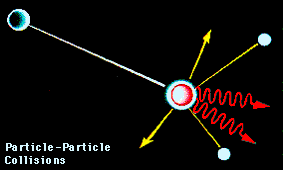 In gamma-ray astronomy, "particle-particle collision" usually means a
high-energy proton,
or cosmic ray, strikes another proton or atomic nucleus. This collision
produces, among other things, one or more neutral pi mesons (or pions).
These are unstable particles that decay into a pair of gamma rays.
Since the pion is usually moving at a high velocity as a result of its
violent birth, the gamma rays are projected forward in a slight "V"
formation. This process gives rise to gamma rays with a broad
spectrum
of energies (all greater than 72 mega-electron-volts,
which is a measurement of the kinetic energy in the incident
particles).
In gamma-ray astronomy, "particle-particle collision" usually means a
high-energy proton,
or cosmic ray, strikes another proton or atomic nucleus. This collision
produces, among other things, one or more neutral pi mesons (or pions).
These are unstable particles that decay into a pair of gamma rays.
Since the pion is usually moving at a high velocity as a result of its
violent birth, the gamma rays are projected forward in a slight "V"
formation. This process gives rise to gamma rays with a broad
spectrum
of energies (all greater than 72 mega-electron-volts,
which is a measurement of the kinetic energy in the incident
particles).
Matter-antimatter annihilation
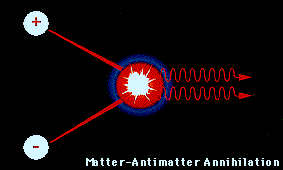
A particle and its anti-particle, such as an electron and a positron, will undergo something called an annihilation process. In physics, this process produces neutral pions that quickly decay into gamma rays.
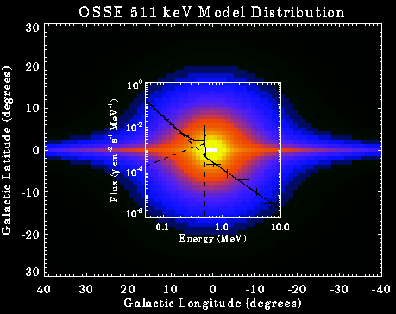
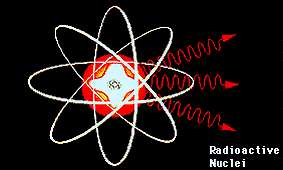
Radioactive Decay
Radioactive decay results when an element changes to another element by virtue of changes within the atom's nucleus. These changes leave the nucleus in an excited state. The atom emits a gamma ray as it decays into the ground state. We not only observe these gamma rays, but their fluxes and spectra identify the specific nuclei and the rate of their excitation. Extreme physical conditions are required to produce excited nuclei, thus allowing us to probe unique physical environments with these observations. Radioactive gamma-ray sources in space are associated with events of nucleosynthesis, such as supernovae.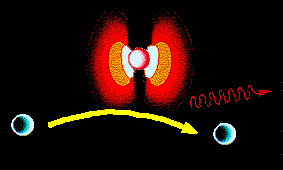
Acceleration of Charged Particles
A magnetic field exerts a force on a charged particle that is moving in it. This causes the particle to radiate, with the emitted power being proportional to the square of the force divided by the square of the mass of the particle. For electrons, this radiation is often in the gamma-ray region of the electromagnetic spectrum. The character of the radiation (and the name given to it) depends on the nature of the accelerating force. If the electron is accelerated in the electrostatic field around a nucleus, the resulting radiation is called bremsstrahlung; it is synchrotron radiation (sometimes also called cyclotron radiation) when the acceleration takes place in a static magnetic field; and the process is called or Compton scattering (sometimes also called Thomson scattering) when the acceleration occurs in the electromagnetic field of a photon. Last Modified: October 2010

